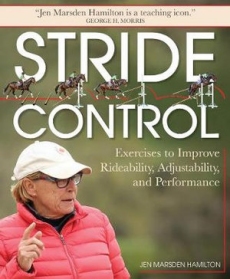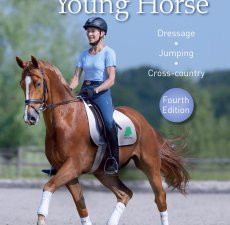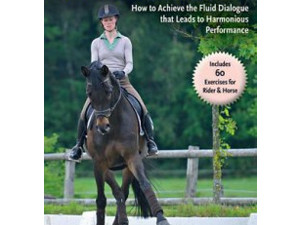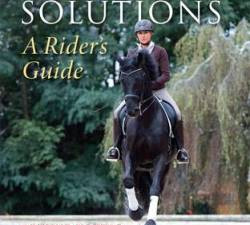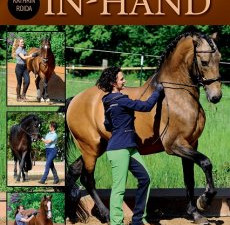Stride Control
Stride Control
$45.00
Stride Control
AUTHOR: JEN MARSDEN HAMILTON
Understanding and implementing stride control (being able to adjust the number of strides before and between fences) improves a horse’s rideability and allows the rider to further improve the horse’s technique over an obstacle. Jen Marsden Hamilton discovered striding from former US Show Jumping Chef d’Equipe George Morris, who credits her as being the first student to whom he taught the method that he’d learned from Bertalan De Némethy, one of his mentors.
Stride control is an essential part of any rider’s development when jumping obstacles, and jumping them well, is a goal. Paperback, 176 pages, illustrated
Out of stock
CompareDescription
Stride Control
Stride control is an essential part of any rider’s development when jumping obstacles, and jumping them well, is a goal. Now, after coaching countless riders and horses around the world in the striding techniques that brought her success during her own impressive competitive career, and Hamilton has compiled her knowledge in a concise book of exercises and insightful strategies.
This fun, approachable guide will help all riders train with correctness and form good habits at home so they can be stars at their next jumping or eventing competition. Exercises include detailed set-up instructions and illustrations for reference; clear discussion of the purpose and strategy for the training session; and helpful tips, to ensure all involved are benefiting from the lesson. Throughout, Hamilton’s straight-talk and wry humour entertain as well as advice, providing an all-around superb guide to a necessary jumping skill.
Related products
Basic Training of the Young Horse Klimke
Basic Training of the Young Horse Klimke $57.95Basic Training Young Horse Klimke
Dressage- Jumping-Cross Country
The first year under saddle sets the building blocks for the future of a riding horse: with a solid basic training he can do what is required of him willingly while remaining in the best of heath.
- Basic education and handling from foal hood
- Lungeing and free-schooling
- Backing and training under saddle
- Developing impulsion from suppleness
- Assessing and improving basic gaits
- Cavalletti work
- Jumping training
- Cross-country training
- Preparing for the first competition
Ingrid Klimke follows in the footsteps of her famous father, Reiner Klimke. A successful Olympic participant and European bronze medallist, she is one of very few riders to have achieved major successes at the highest level in both dressage and three-day-eventing.
Rider+Horse = 1
Rider+Horse = 1 $45.00Rider+Horse = 1
How to Achieve the Fluid Dialogue that Leads to Harmonious Performance
Bringing rider and horse together so they can move as one is a complex equation. Now, sports physiologist and movement expert Eckart Meyners has combined efforts with German Riding School Head Hannes Muller and St. Georg editor Kerstin Niemann to provide a book with the answers.
Featuring 2014 World Equestrian Games gold and silver medal winning rider Helen Langehanenberg and a depth of detail not yet found in other books on riding theory and biomechanics make Rider+Horse=1 necessary reading for all those who aspire to a true understanding of movement, function, and their impact on performance.
Hardback
Dressage Solutions – A Riders Guide
Dressage Solutions – A Riders Guide $65.00Dressage Solutions – A Riders Guide
Following on from the highly acclaimed Kottas on Dressage, this new book by one of the foremost exponents of Classical dressage offers advice on the correct way to introduce work on the paces, exercises and movements, together with in-depth analysis of common problems and ways to correct them.
The need to consider various aspects of conformation is also stressed – not all horses are perfect specimens, and the overall training of any horse will be enhanced if due consideration is given to individual characteristics.
Dressage Training In Hand
Dressage Training In Hand $54.95Dressage Training In Hand
Over the course of her riding and horse training career, Kathrin Roida has progressively gained a deep appreciation for the benefits of gymnastic exercises, particularly those that can be taught to the horse from the ground. “In-hand” training has long been used to help develop the dressage horse, conditioning and suppling his body while at the same time preparing his mind to grasp the movements that may eventually be expected under saddle.

